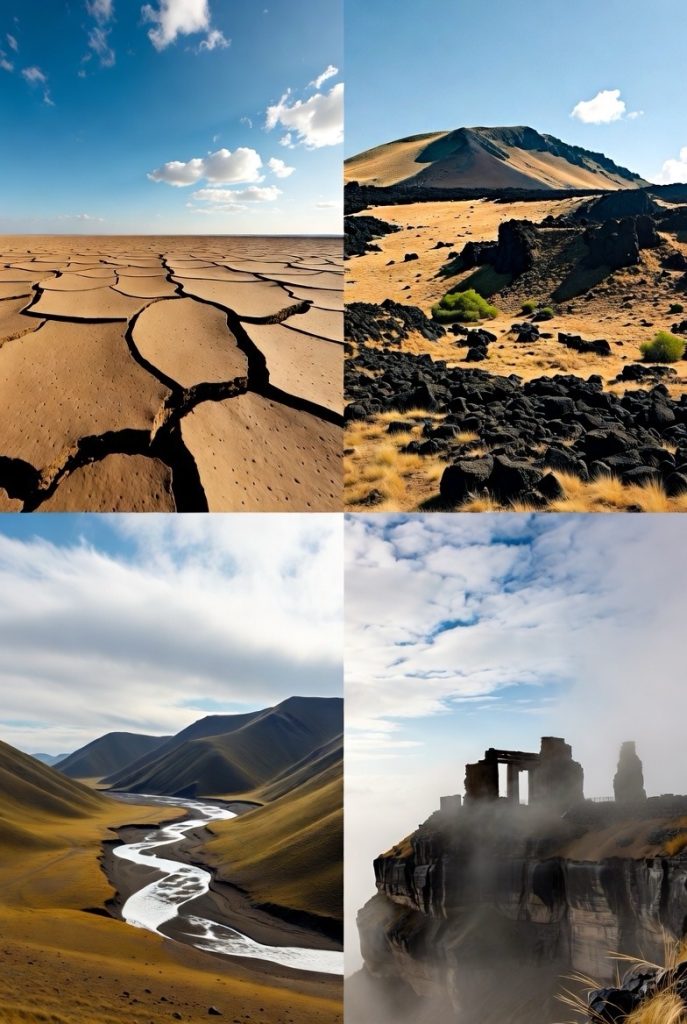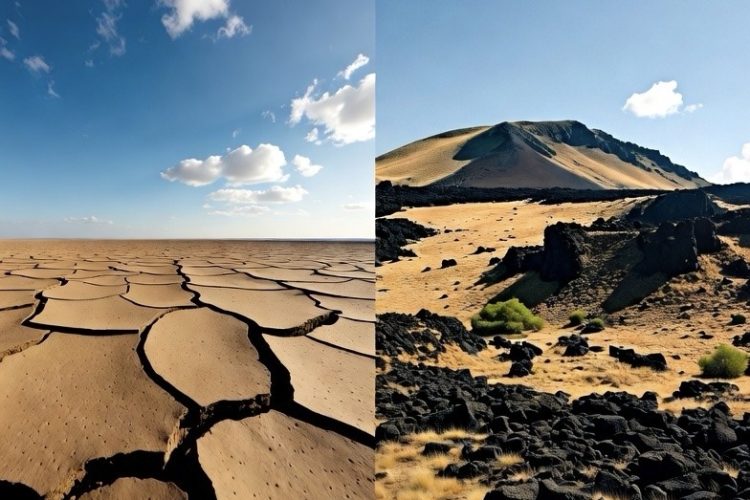The deadliest places on Earth are dangerous due to extreme conditions, venomous wildlife, and human threats. Snake Island (Brazil) is packed with golden lancehead vipers—one bite melts flesh fast. Danakil Desert (Ethiopia) hits 50°C+ with toxic sulfur gases, volcanic activity, and acidic pools. Death Valley (USA) recorded 56.7°C; sudden floods and heat kill quickly. Chernobyl Exclusion Zone (Ukraine) remains highly radioactive—unstable ruins and hidden hotspots pose long-term risks. North Sentinel Island (India) is guarded by hostile isolated tribes who attack outsiders. All are restricted or high-risk; travel warnings ban solo visits. Never go alone—guided tours with experts are essential for survival in these hazardous, inhospitable zones.
Long Version
5 Deadliest Places on Earth You Should Never Visit Alone
The planet harbors some of the most extreme and inhospitable environments imaginable, where natural disasters, human-made dangers, and perilous conditions converge to create high-risk zones that challenge human survival. These deadliest locations, often off-limits or restricted due to their hazardous nature, attract the daring but demand utmost caution. Venturing into them alone amplifies the dangers, from toxic exposures to sudden catastrophes like earthquakes, landslides, or floods. Drawing from well-documented sources, this article explores five such perilous sites, weaving in their unique threats—ranging from venomous snakes and radioactive contamination to volcanic activity and isolated tribes—while highlighting why they remain forbidden frontiers for most adventurers.
1. Snake Island (Ilha da Queimada Grande), Brazil
Nestled off the coast of Sao Paulo, Snake Island stands as one of the most dangerous and deadly spots on Earth, teeming with venomous snakes that make it a perilous haven for the golden lancehead viper. This restricted island, spanning just 43 hectares, hosts an estimated one to five snakes per square meter, rendering it inhospitable and off-limits to all but authorized researchers and the Brazilian Navy. The golden lancehead viper, isolated here after rising sea levels post-Ice Age, possesses venom five times more potent than mainland relatives, capable of melting human flesh and causing rapid death without immediate medical intervention. Travel warnings are stringent: the Brazilian government has banned visitors due to the high-risk of bites, with historical accounts of fishermen meeting gruesome ends upon accidental approach. Despite its toxic reputation, the island’s rainforest and rocky terrain underscore the extreme survival challenges, where even brief exposure invites disaster. For those intrigued by such hazardous adventures, guided expertise is non-negotiable, as this forbidden paradise exemplifies nature’s deadliest defenses.
2. Danakil Desert (Danakil Depression), Ethiopia
In the Afar Triangle of East Africa, the Danakil Desert—also known as the Danakil Depression—claims its spot among the hottest places on Earth, a volcanic wasteland where extreme temperatures soar above 50°C (122°F) and toxic gases from geysers and sulfur vapors create a hazardous, otherworldly landscape. This geothermal activity hotspot, featuring sites like Dallol with its acidic ponds and bubbling springs, is one of the most inhospitable regions, where annual rainfall dips below 25 mm and the brittle crust hides deadly traps. Volcanic eruptions, earthquakes, and the emission of poisonous sulfur vapors compound the risks, making survival a constant battle against dehydration, heatstroke, and respiratory issues from toxic inhalants. Travel warnings emphasize the high-risk nature: kidnappings in nearby areas add human-made dangers, and the remoteness demands armed escorts for any exploration. Despite drawing hardy adventurers to its colorful mineral formations and active volcanoes, this perilous expanse, often dubbed a “gateway to hell,” requires meticulous preparation to navigate its natural disasters and extreme conditions safely.
3. Death Valley, California, USA
Death Valley, straddling the California-Nevada border, lives up to its name as one of the hottest places on the planet, where extreme temperatures have hit 56.7°C (134°F), turning this arid basin into a deadly furnace of heat and desolation. This national park’s hazardous environment includes sudden floods from surrounding mountains, landslides, and an unforgiving landscape that amplifies risks of dehydration and heat-related illnesses. As the lowest point in North America at 282 feet below sea level, it traps heat, creating inhospitable conditions where survival hinges on ample water and shade—essentials often scarce. Travel warnings are clear: park rangers advise against hiking after 10 AM in summer, with historical tales of lost settlers underscoring the perils. While it shares notoriety with spots like the Danakil Desert for its scorching extremes, Death Valley’s accessibility draws thrill-seekers, but venturing alone invites disaster amid its high-risk dunes and canyons, demanding rigorous preparation for any adventure.
4. Chernobyl Exclusion Zone, Ukraine
The Chernobyl Exclusion Zone, a 2,600-square-kilometer radioactive wasteland surrounding the site of the 1986 nuclear disaster, remains one of the most perilous human-made dangers on Earth, where lingering radioactive contamination poses long-term threats to health and life. This forbidden area, dotted with abandoned ruins of Pripyat and warped forests, features elevated radiation levels that can cause acute sickness or deformities, despite gradual decay. Hazards include unstable structures prone to collapse, hidden hotspots of uranium mining-like toxicity, and wildlife anomalies from the fallout. Travel warnings restrict access to guided tours only, with strict dosimetry checks to mitigate risks, echoing similar perils in Fukushima and Mailu Suu. While the zone draws dark tourism enthusiasts eager to witness the aftermath of this nuclear catastrophe, exploring alone heightens exposure to its deadly legacy, demanding protective gear and expert guidance for any survival-oriented visit.
5. North Sentinel Island, Andaman Islands, India
North Sentinel Island, part of India’s Andaman chain, is a restricted enclave guarded by one of the world’s last isolated tribes, the Sentinelese, whose hostility toward outsiders makes it a deadly and off-limits territory fraught with human dangers. This small, forested island hosts a community of 50 to 400 people who violently repel intruders with bows and arrows, as seen in attacks on fishermen and missionaries, preserving their independence from modern influences. Perils include not just physical assaults but also the risk of introducing diseases to which the tribe lacks immunity, alongside treacherous reefs and dense jungles. Travel warnings are absolute: the Indian government enforces a no-contact policy, similar to protections for other isolated tribes, to avert cultural erasure or epidemics. While its pristine beaches evoke adventure, this high-risk haven demands respect for its boundaries, as any solo approach could end in tragedy amid its perilous isolation.
These five deadliest places encapsulate Earth’s most extreme threats, from venomous wildlife and scorching heats to radioactive ruins and tribal defenses. Comparable sites like Oymyakon’s coldest inhabited extremes, Lake Natron’s toxic alkalinity, the Skeleton Coast’s harsh desolation, or the Gate to Hell’s fiery crater further illustrate our planet’s perilous diversity. For safety, heed travel warnings, opt for guided expeditions, and recognize that true adventure lies in informed respect for these hazardous wonders rather than reckless solo pursuits.

Hashtags For Social Media
#deadliestplaces #dangerzones #extremeearth #forbiddenplaces #travelwarnings #darktourism #mostdangerousplaces #earthsecrets #travelrisks #mysteryearth #extremetravel #unexploredworld #deathvalley #snakeisland #chernobyl #northsentinelisland #danakildesert #earthsmysteries #bannedplaces #adrenalinejunkie #wildplanet #travelcuriosity #dangerousworld #offlimitstravel #adventureseekers #creepylocations #worldexploration #explorerslife #daretoexplore #scariestplaces
Related Questions, Words, Phrases
what are the top 5 deadliest places on earth | which are the most dangerous places in the world | what are the deadliest places humans can’t visit | where are the most dangerous zones on earth | is snake island the deadliest place on earth | what makes snake island in brazil so deadly | how hot does the danakil desert in ethiopia get | why is the danakil desert so dangerous | where is death valley and why is it deadly | what is the hottest place on earth that kills people | how dangerous is the chernobyl exclusion zone today | can you visit chernobyl safely in 2025 | why is north sentinel island forbidden | are there still people on north sentinel island | what happens if you go to north sentinel island | what are the most restricted places on earth | where are humans not allowed to go on earth | why are some places on earth too dangerous to visit | can tourists visit the world’s deadliest locations | what are examples of extreme danger zones on earth | what are the hottest and most dangerous places on earth | which deadly places are banned for travelers | are there any deadly islands in the world | what is the deadliest desert on earth | how deadly is death valley in california | what toxic places exist on our planet | what are the world’s most forbidden deadly spots | why is chernobyl still unsafe after decades | what are natural places where humans can’t survive | how do experts explore the world’s deadliest places | what are 5 extreme locations too dangerous to visit | where should you never travel in the world | what are the most lethal destinations on earth | what dangerous places require special guides | where on earth do people die from extreme conditions






